Syria, located in the middle east, is home to a diverse range of bird species. The country’s varied geography, including the Mediterranean coastline, mountainous regions, and dessert areas, provide a suitable habitat for different types of birds.
Syrian birds are known for their beauty and unique characteristics, with some species being endemic to the region. Ornithologists and bird watchers alike come to Syria to study and observe the avian fauna, making it a popular travel destination for nature enthusiasts around the world.
Despite the ongoing political unrest and conflict in the country, efforts are being made to conserve and protect Syria’s bird population.
1. Sandgrouse
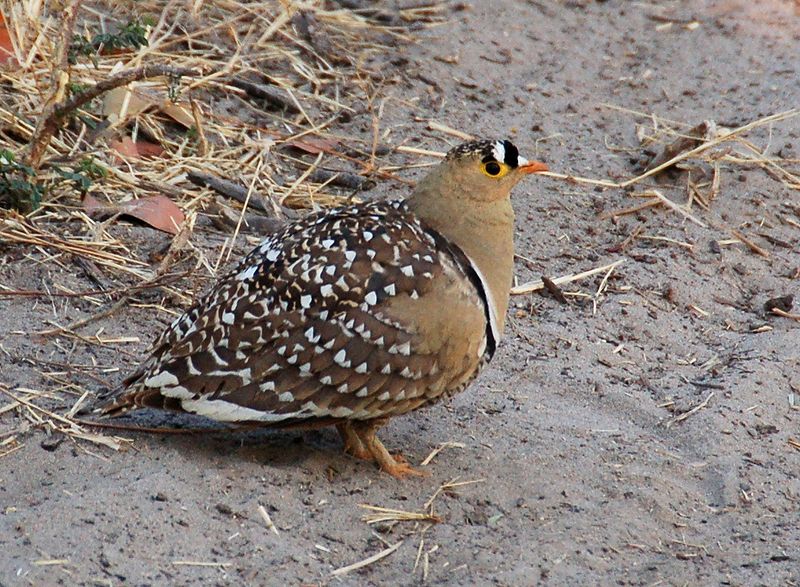
Sandgrouse is birds of the order Pterocliformes, found mainly in Africa and Asia. There are sixteen species belonging to two genera – Syrrhaptes from central Asia and Pterocles from Africa and other Asian countries.
They inhabit treeless areas such as deserts, steppes, scrubland, or savannas and tend to be ground-dwelling birds that feed on seeds.
Sandgrouse has adapted special features for survival in their harsh environment.
They possess well-developed feet with four toes used for walking over hot sand while keeping their body temperature cool at all times by regulating heat loss through their legs.
Their feathers also act like a sponge helping them absorb water before flying long distances back home where they then expel it using specialized glandular secretions located near the wings so that chicks can drink directly from an adult’s breast plumage.Scientific classification:
| Kingdom | Animalia |
| Phylum | Chordata |
| Class | Aves |
| Clade | Columbimorphae |
| Order | Pterocliformes Huxley, 1868 |
| Family | Pteroclidae Bonaparte, 1831 |
Also Featured In: Most Common Birds in China, Italian Birds You Should Know
2. Plovers

Plovers are a family of around 64-68 species of ground-dwelling birds, commonly found in open country such as fields, meadows and tundras.
They have short bills with webbed feet to help them forage through mud or shallow water.
Plover plumage is usually mottled brown though some species may have brighter colors on the head and wings.
These birds feed mainly on insects but can also eat small crustaceans and worms.
Plovers breed during springtime when they dig holes in sandy or pebbled beaches to lay their eggs which hatch after about 3 weeks incubation period.
They use distraction display behaviour by pretending an injury to the predators away from their nests if needed for protecting their young ones.Scientific classification:
| Kingdom | Animalia |
| Phylum | Chordata |
| Class | Aves |
| Order | Charadriiformes |
| Family | Charadriidae Leach, 1820 |
Also Featured In: Common Uzbekistan Birds, Birds of Sweden
3. Glareolidae
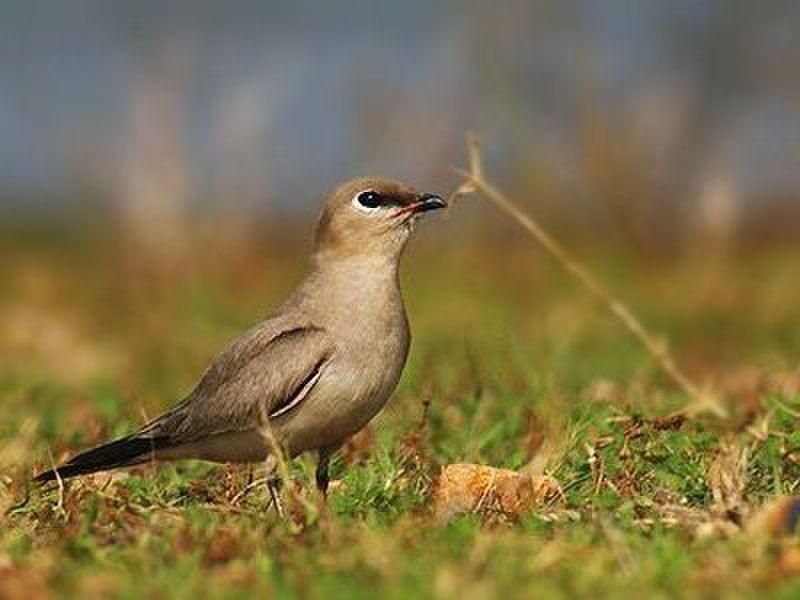
Glareolidae is a family of wading birds, consisting of four genera and 17 species. They are distinguished from other charadrii by their long bills which have a slight downward curve.
Glareolidae live around open grasslands and deserts, where they hunt for insects using the bill to probe into soil or vegetation.
Most species are found in Africa but two pratincoles inhabit parts of Europe and Asia as well.
Coursers tend to be larger than pratincoles with longer legs allowing them to run quickly across sandy dunes while feeding on small animals like lizards or spiders.
Pratincoles feed mainly on flying insects, snatching them out of midair with great agility during flight.
All glareolids share unique features such as large eyes that help it spot prey at night easily making this group one interesting bird family.Scientific classification:
| Kingdom | Animalia |
| Phylum | Chordata |
| Class | Aves |
| Order | Charadriiformes |
| Suborder | Lari |
| Family | Glareolidae CL Brehm, 1831 |
Also Featured In: Native Birds of Kazakhstan, Common Denmark Birds
4. Bustard
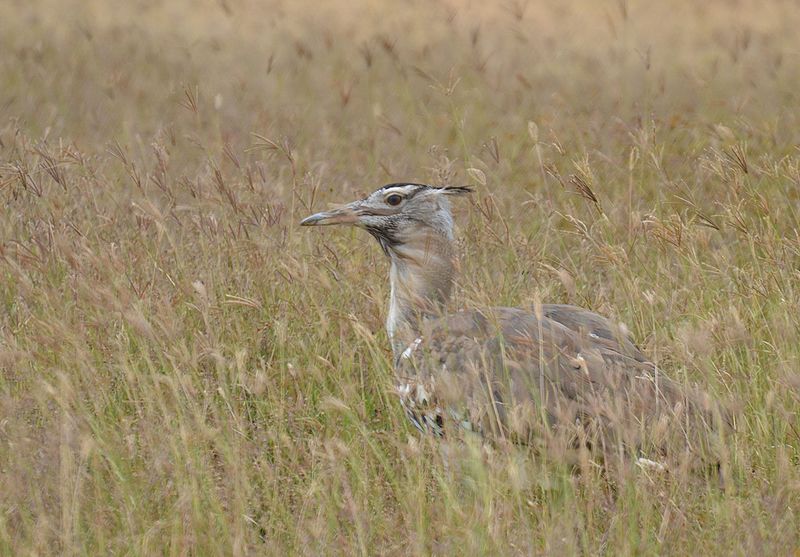
Bustards are large, terrestrial birds that inhabit dry grassland areas and the steppes of the Old World. They range from 40-150 cm in length and belong to the family Otididae.
Bustards have an omnivorous diet consisting of leaves, buds, seeds, fruit as well as small vertebrates and invertebrates.
These birds usually live a solitary life but can be seen gathering around water sources or food during certain times of year such as mating season.
Due to their large size they are vulnerable to predation by foxes or other animals which is why they tend to remain alert at all times.
When in open spaces while relying on camouflage for protection against predators when out in tall vegetation coverings.Scientific classification:
| Kingdom | Animalia |
| Phylum | Chordata |
| Class | Aves |
| Clade | Otidimorphae |
| Order | Otidiformes Wagler, 1830 |
| Family | Otididae Rafinesque, 1815 |
Also Featured In: Common Birds in India, Ukrainian Birds You Should Know
5. Bulbul
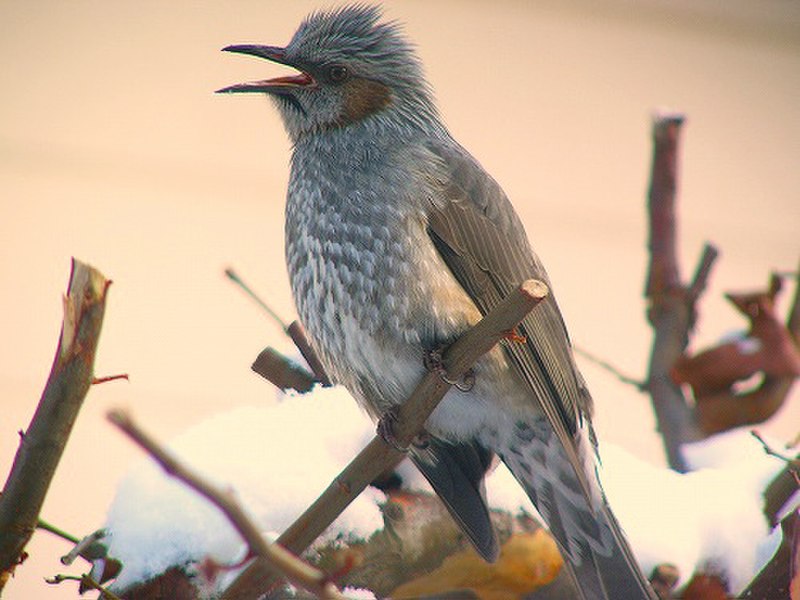
Bulbuls are a medium-sized passerine songbird family native to Africa, the Middle East and tropical Asia up until Japan. They can also be found on some of the Indian Ocean islands.
There are 160 species within 32 genera in this family which includes greenbuls, brownbuls, leafloves and bristlebills.
Bulbul birds have been known for their beautiful singing voices as well as for being very active during mating season when they gather together to create large flocks where potential mates can show off their skills.
The coloration of bulbuls range from dull greys or browns to vibrant yellows with black markings around the head region making them quite attractive creatures indeed.Scientific classification:
| Kingdom | Animalia |
| Phylum | Chordata |
| Class | Aves |
| Order | Passeriformes |
| Parvorder | Sylviida |
| Family | Pycnonotidae Gray, GR, 1840 |
Also Featured In: Birds That Live in Iraq, Armenian Birds You Should Know
6. Shorebirds
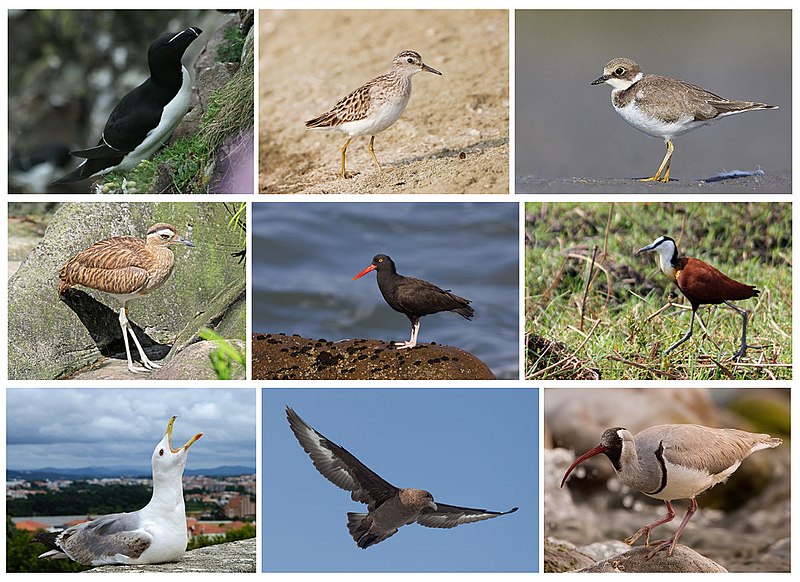
Shorebirds, a diverse group of birds in the Charadriiformes order, are found near water on every continent except Antarctica.
These small to medium-sized birds feed mainly on invertebrates and other small animals but can also be pelagic seabirds or inhabit deserts.
Shorebirds use their long bills to probe mudflats for food like worms and mollusks while some species plunge into the ocean’s depths in search of crustaceans such as crabs and shrimp.
They have strong legs equipped with webbed feet which allow them to move quickly when searching for prey across wetlands, sandbars, beaches and swamps.
Their feathers make them well adapted to life by land or sea due to its hydrophobic nature which helps reduce drag during swimming or flying through windy conditions making it easier for shorebirds survive tough environments around the world.Scientific classification:
| Kingdom | Animalia |
| Phylum | Chordata |
| Class | Aves |
| Infraclass | Neognathae |
| Clade | Neoaves |
| Clade | Gruimorphae |
| Order | Charadriiformes Huxley, 1867 |
Also Featured In: Beautiful Brazilian Birds, Water Birds Live around Us
7. Stone-Curlew

Stone-curlews, also known as dikkops or thick-knees, are a family of birds that have adapted to live in tropical and temperate regions throughout the world.
They can be found in Africa, Asia and Australia with two or more species per region. Despite being classified as waders, most prefer dry arid habitats over moist wetlands.
Stone-curlews typically have long legs which help them navigate through their preferred terrain efficiently; some species even stand at an impressive height when standing on those long legs.
Additionally they feature cryptic plumage which helps them blend into their surroundings while hunting for prey such as insects and small mammals like rodents.
These unique bird’s calls are easily recognizable; it has been said that hearing one is similar to listening to someone whistling ‘Keee Weee’.Scientific classification:
| Kingdom | Animalia |
| Phylum | Chordata |
| Class | Aves |
| Order | Charadriiformes |
| Suborder | Chionidi |
| Family | Burhinidae Mathews, 1912 |
Also Featured In: Birds Found in Hungary, Bulgarian Birds
8. Bee-Eater
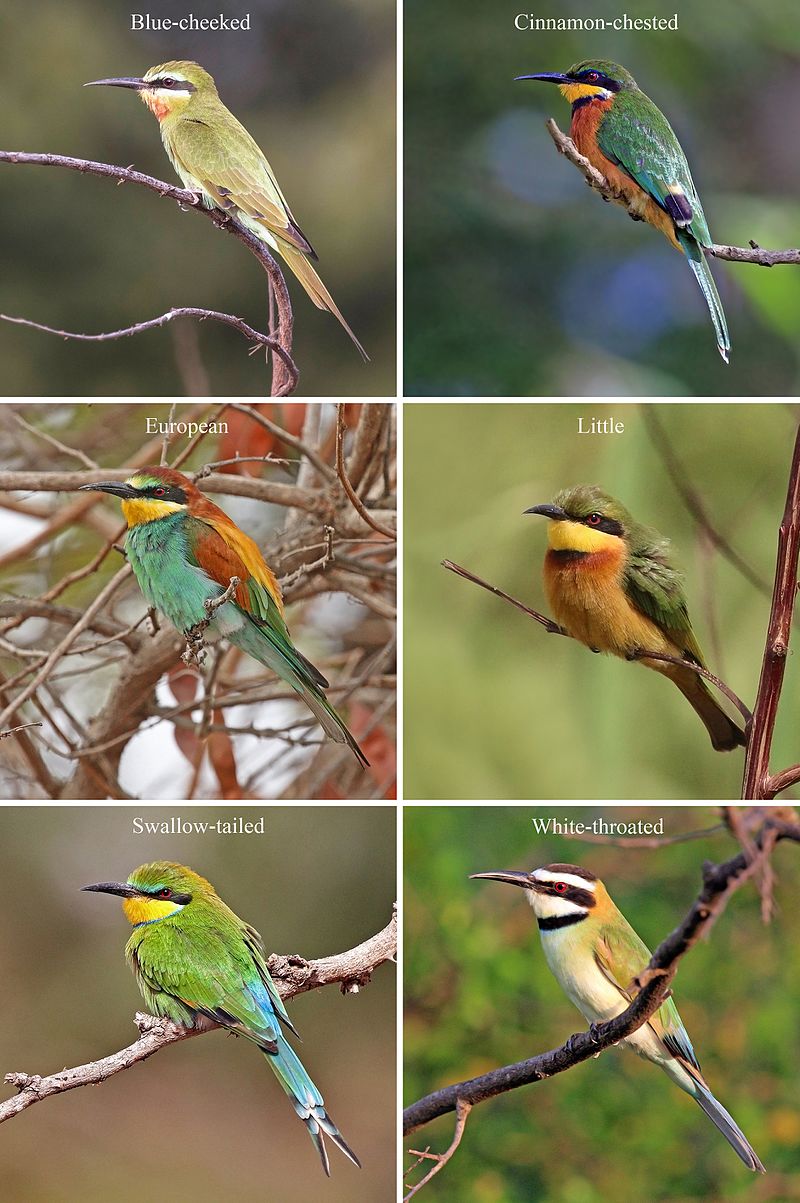
Bee-eaters are one of the most beautiful and vibrant birds in existence. They have a slender body, long wings, down turned bills and their signature elongated central tail feathers which make them instantly recognizable from afar.
Their plumage is incredibly colorful with many shades ranging from blues to greens to reds that glisten when they fly through the air.
These stunning creatures can be found all over Africa, Asia, Southern Europe, Australia and New Guinea where they feed mainly on bees but also other insects like flies or wasps as well as small mammals such as lizards or rodents.
Bee-eaters live in colonies near rivers or wetlands so that they may easily hunt for food while staying close together for safety purposes.
Additionally it allows them to better display their impressive courtship dances during mating season.Scientific classification:
| Kingdom | Animalia |
| Phylum | Chordata |
| Class | Aves |
| Order | Coraciiformes |
| Family | Meropidae Rafinesque, 1815 |
Also Featured In: Common Nigerian Birds, Common Serbian Birds
9. Old World Orioles
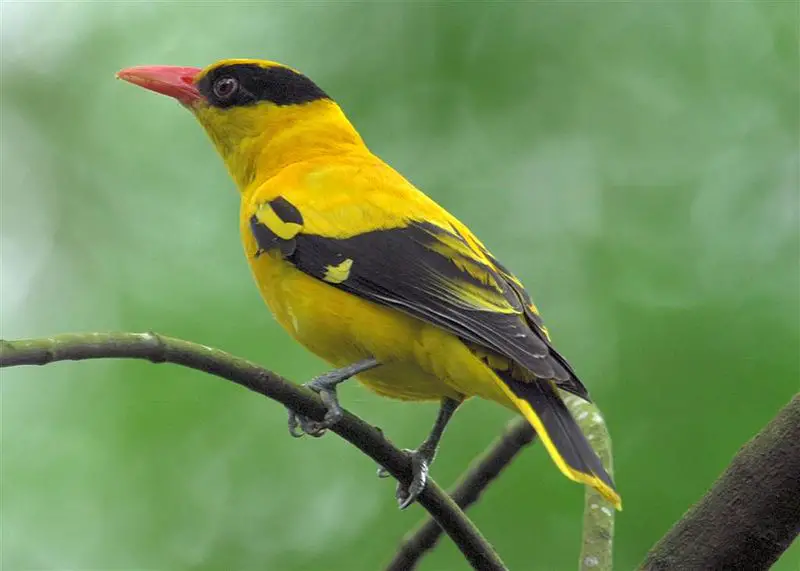
Old World orioles are a family of passerine birds found in the Old World. It comprises four genera: piopios, figbirds, pitohuis and the original genus Oriolus.
The African black-headed species have sometimes been removed from this latter group due to their distinct characteristics as well as other proposed splits for Oriolus.
These colorful birds can be identified by their bright yellow or orange plumage that often features darker markings on wings and head areas, although some species may also display a blue hue or stripes across the body feathers.
They typically feed on insects such as caterpillars and grasshoppers but will supplement with small fruits when available too – making them beneficial additions to gardens.Scientific classification:
| Kingdom | Animalia |
| Phylum | Chordata |
| Class | Aves |
| Order | Passeriformes |
| Superfamily | Orioloidea |
| Family | Oriolidae Vigors, 1825 |
Also Featured In: Egyptian Birds, Birds that Live in Croatia
10. Crab-Plover
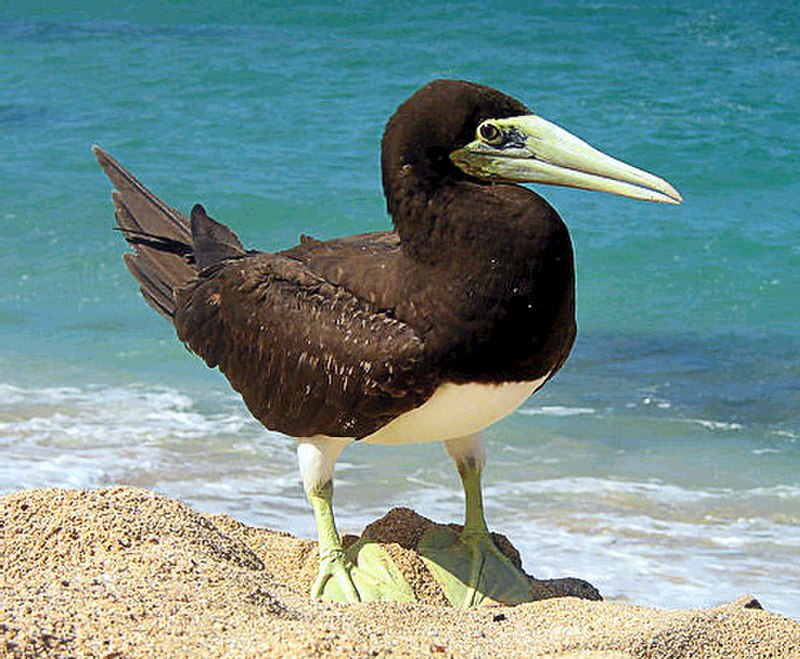
The crab-plover is an exceptional bird which belongs to its own family, Dromadidae. It appears to be closely related to the waders and other Charadriiformes such as auks, gulls and thick-knees.
This species of bird has a unique look; it is white with black markings on its head and wings. Its long bill helps them dig for food in sand or mudflats.
They can also fly up into the air when disturbed by predators or people too close for comfort.
The crab plover spends most of its life near beaches where they feed on crabs, fish eggs and small insects found there.
These birds are highly social during breeding season but solitary at other times throughout their annual cycle making them difficult creatures to spot out in the wild but well worth trying.Scientific classification:
| Kingdom | Animalia |
| Phylum | Chordata |
| Class | Aves |
| Order | Charadriiformes |
| Suborder | Lari |
| Family | Dromadidae GR Gray, 1840 |
| Genus | Dromas Paykull, 1805 |
| Species | D. ardeola |
Also Featured In: East African Birds, Birds of Goa
11. Eurasian Reed Warbler
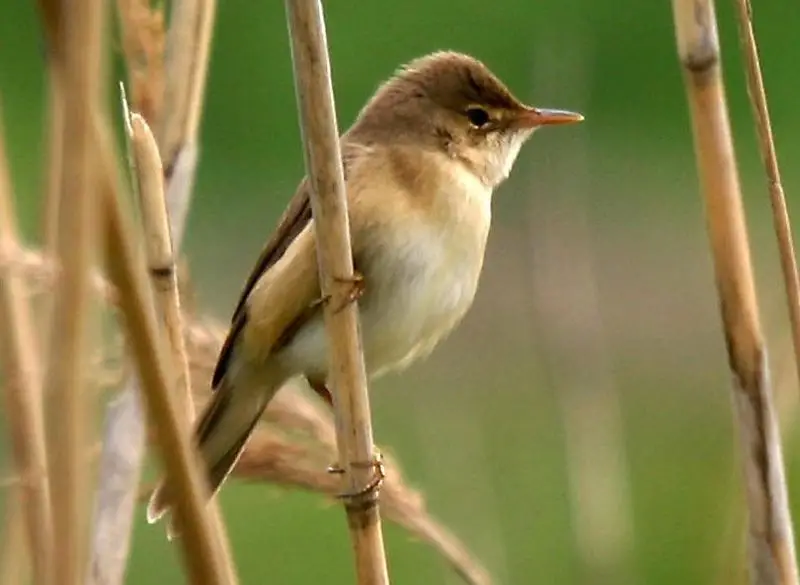
The Eurasian reed warbler (Acrocephalus scirpaceus) is a species of Old World Warbler native to the temperate parts of Europe and Asia.
It breeds in wetlands such as marshes, ponds and rivers with dense vegetation like reeds or tall grasses.
During its wintering season, it migrates southward to sub-Saharan Africa where there are milder conditions.
This small bird has streaked brown plumage on the upperparts and white underparts which makes it difficult for predators to spot among the foliage.
Its diet consists mainly of insects including aphids, caterpillars larvae and moths caught while flying over water or by gleaning from plants growing near water bodies.
The male sings an attractive song consisting of several phrases repeated one after another as part of their courtship display during breeding season in order attract females for mating purposes.Scientific classification:
| Kingdom | Animalia |
| Phylum | Chordata |
| Class | Aves |
| Order | Passeriformes |
| Family | Acrocephalidae |
| Genus | Acrocephalus |
| Species | A. scirpaceus |
Also Featured In: Common Slovakian Birds, Birds You’ll Find in Albania
12. Syrian Woodpecker
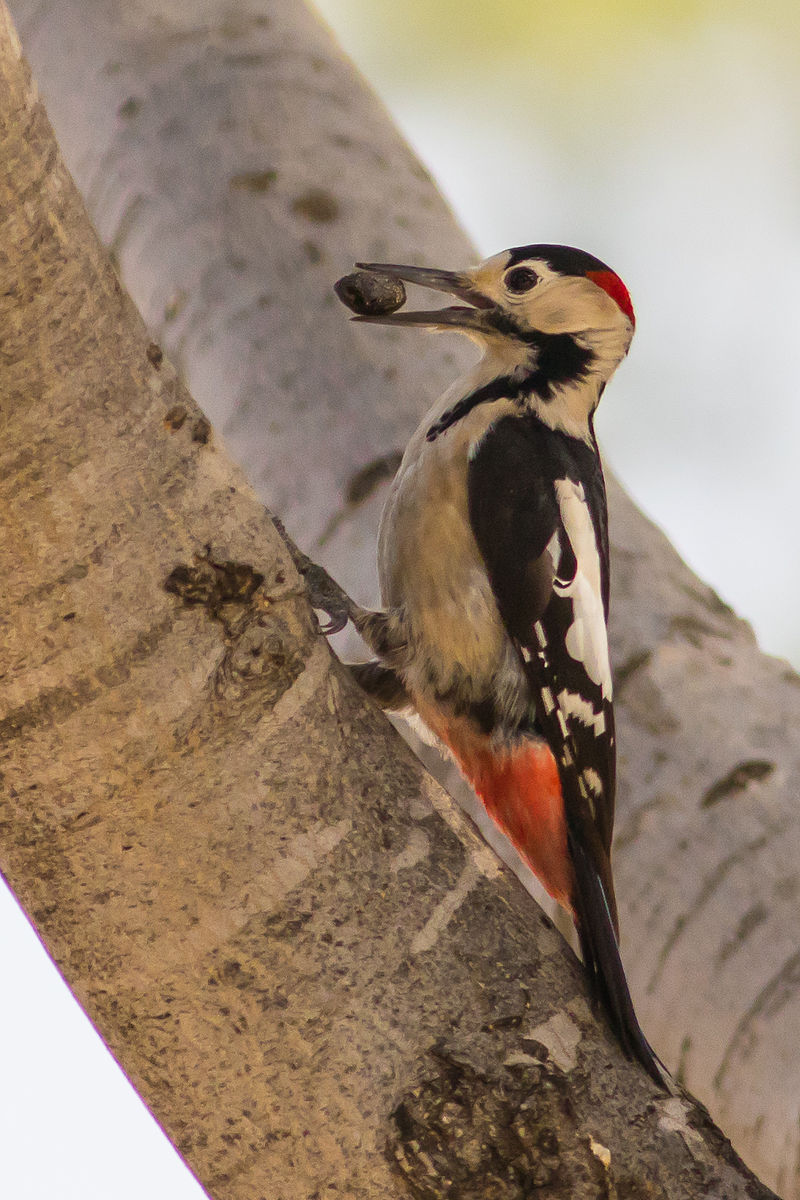
The Syrian woodpecker is a species of the Picidae family, first described in 1833 by Wilhelm Hemprich and Christian Gottfried Ehrenberg.
It resides throughout southeastern Europe to Iran and has recently expanded its range into northwest Europe.
This bird usually breeds in woodland areas with plenty of dead trees for it to feed on insects inhabiting them.
Its most distinguishing features include an olive-green back and black wings; white feathers line the sides while red covers its head crown down to its nape.
They are characterized as being highly vocal birds, often making loud tapping noises when searching for food under tree bark or branches.
The Syrian Woodpecker is a delightful addition to any avian landscape.Scientific classification:
| Kingdom | Animalia |
| Phylum | Chordata |
| Class | Aves |
| Order | Piciformes |
| Family | Picidae |
| Genus | Dendrocopos |
| Species | D. syriacus |
Also Featured In: Birds of Poland,
13. Skuas
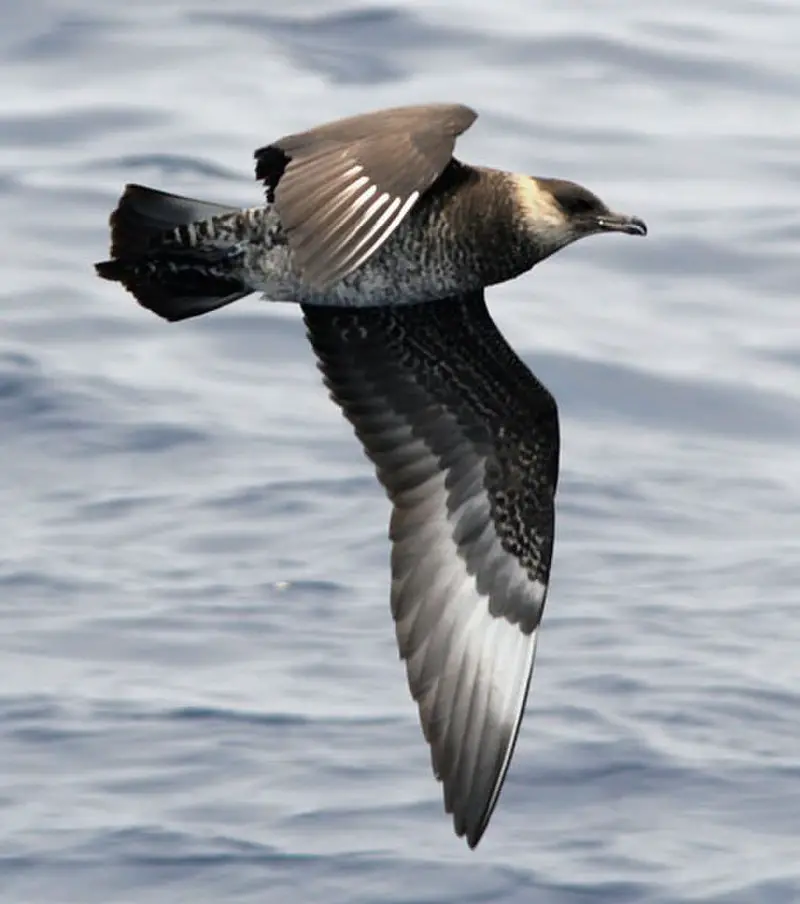
Skuas are a group of predatory seabirds with seven species, all belonging to the genus Stercorarius.
They are also known as “Jaegers” in North America and their name originates from the Faroese word for Great Skua – skúgvur.
These birds typically inhabit coastal areas or open oceans where they feed on fish, krill and other marine creatures.
Skuas can be distinguished by their pointed wings which help them fly long distances while hunting food.
Their distinctive colouration varies depending on age and habitat but generally includes greyish brown upperparts and white underparts with black streaks along its belly area.
The overall size ranges from 24-40 cm making these one of the larger sea bird species.Scientific classification:
| Kingdom | Animalia |
| Phylum | Chordata |
| Class | Aves |
| Order | Charadriiformes |
| Suborder | Lari |
| Family | Stercorariidae Gray, 1871 |
| Genus | Stercorarius Brisson, 1760 |
Also Featured In: Birds of Morocco, Birds You’ll Find in the Sea
14. Sylviid Warblers
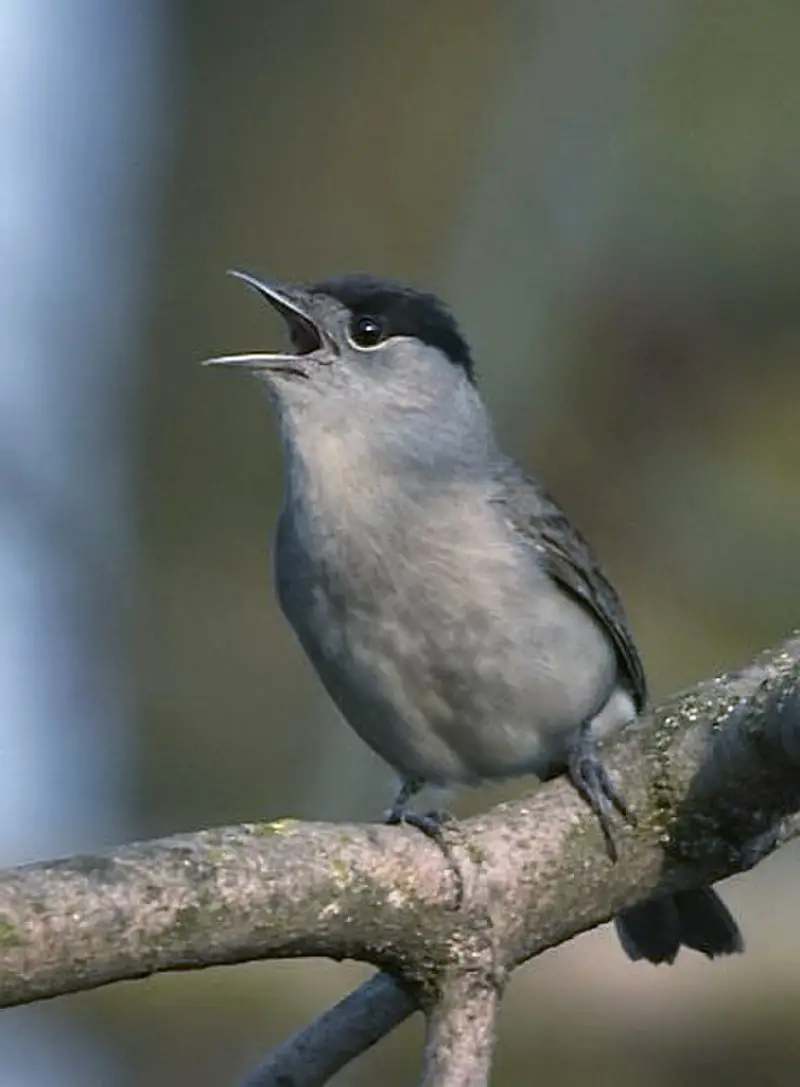
The Sylviid warblers are a family of passerine birds found in Eurasia and Africa. They include the typical warblers as well as babblers that were formerly part of the Old World babbler family.
These birds have slender bodies, pointed wings, long tails and strong legs adapted for ground-dwelling habits like running or hopping along branches.
The male often has bright colors while females are usually duller in coloration with more muted plumage patterns than males.
Some species also show sexual dimorphism where one sex may be larger or smaller than its counterpart; for instance some species may have longer tail feathers on the female side compared to their male counterparts.
Many members of this group feed on insects but some specialize on seeds, fruits, nectar or even frogs.Scientific classification:
| Kingdom | Animalia |
| Phylum | Chordata |
| Class | Aves |
| Order | Passeriformes |
| Superfamily | Sylvioidea |
| Family | Sylviidae Leach, 1820 |
Also Featured In: Birds You’ll Find in Moldova, Most Common Lithuanian Birds
15. Laughingthrushes
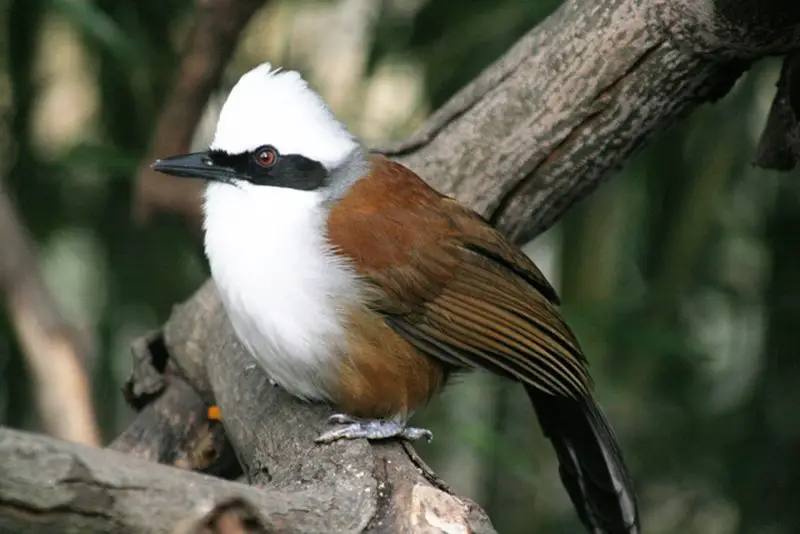
Laughingthrushes are a family of passerine birds found in tropical areas, primarily Southeast Asia and the Indian subcontinent.
They vary greatly in size and coloration but generally they have strong legs and many species are terrestrial or semi-terrestrial.
These birds typically inhabit forests where they feed on insects, fruits, seeds and occasionally small vertebrates.
The diet varies depending on the species as some prefer to forage among foliage while others look for food along the forest floor or take it from trees high up in their habitat.
In general these active creatures live in flocks that can range from just a few individuals to large groups with dozens of members making them quite vocal at times.Scientific classification:
| Kingdom | Animalia |
| Phylum | Chordata |
| Class | Aves |
| Order | Passeriformes |
| Superfamily | Sylvioidea |
| Family | Leiothrichidae Swainson, 1832 |
Also Featured In: Birds Commonly Found in Slovenia, Most Common Taiwan Birds
16. Syrian Serin
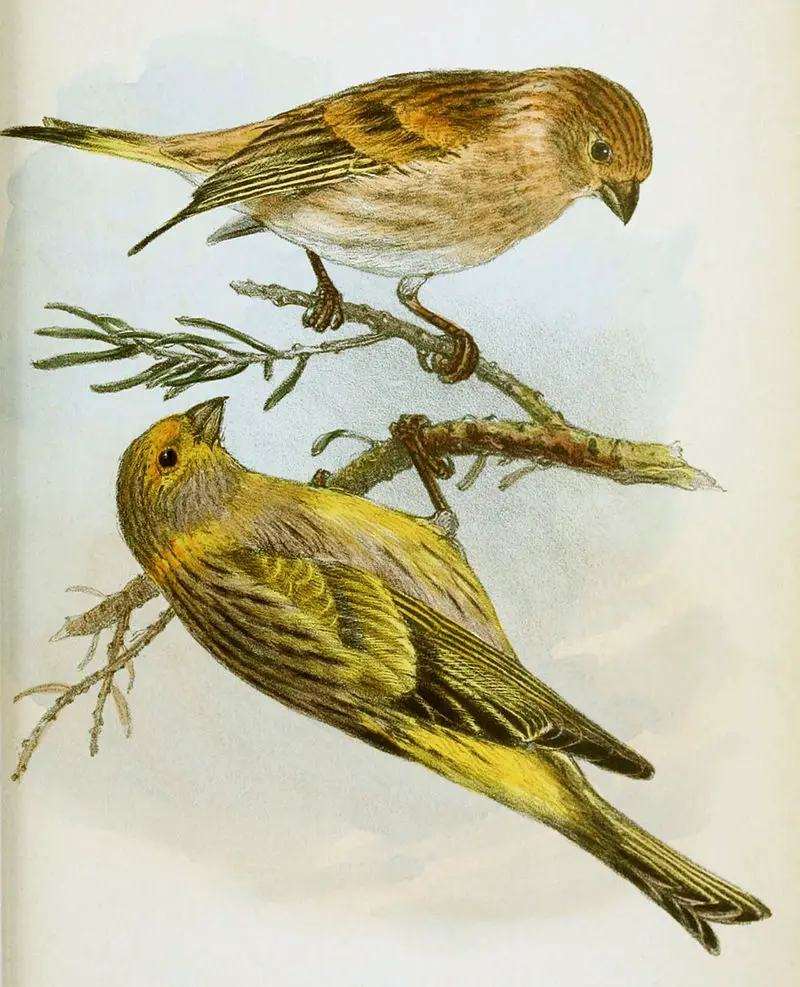
The Syrian serin is a beautiful finch bird with bright yellow and pale grey feathers, large eyes surrounded by a bright yellow ring, and a grey beak. Its legs are pinkish-grey in colour.
It has an endearing trilling call that carries far on the air along with occasional chirps or twitters.
This small passerine breeds mainly in Syria and continues to thrive there due to its varied diet of seeds from weeds as well as fruits found within their habitat range.
The Syrian Serin can often be seen flitting about bushes or trees where it builds nests made from grasses for nesting purposes during springtime mating season when male birds display colourful plumage for attracting mates.Scientific classification:
| Kingdom | Animalia |
| Phylum | Chordata |
| Class | Aves |
| Order | Passeriformes |
| Family | Fringillidae |
| Subfamily | Carduelinae |
| Genus | Serinus |
| Species | S. syriacus |
Also Featured In: Common Birds in Saudi Arabian,
17. Locustellidae
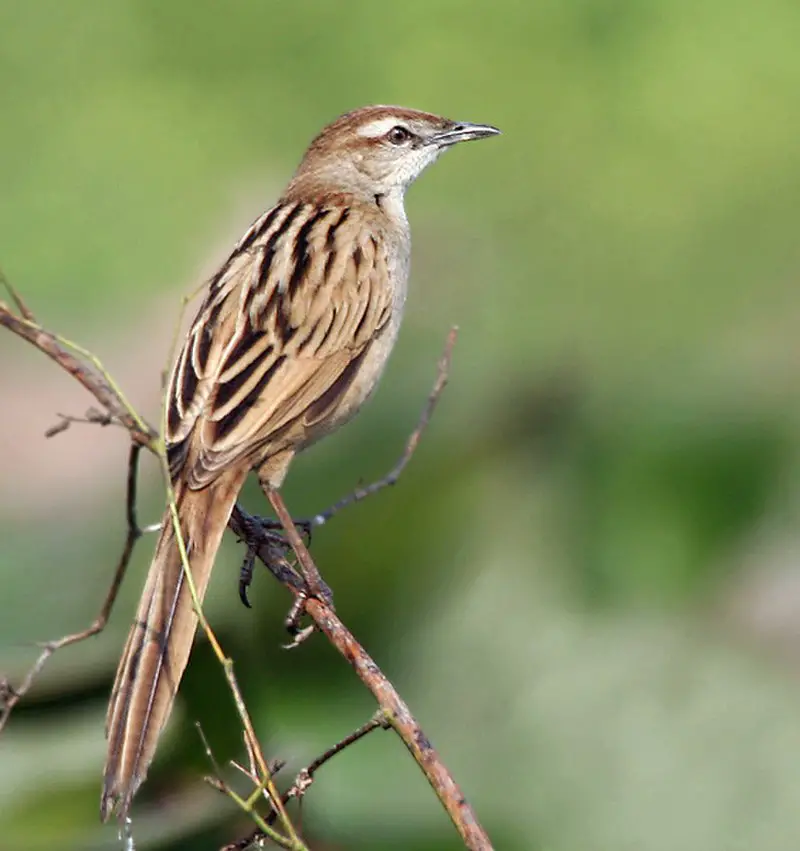
Locustellidae is a family of small insectivorous songbirds, commonly known as warblers. They are found mainly in Eurasia, Africa and the Australian region.
These birds typically have plain coloring on their wings and tail but with brightly colored patches on their face or neck.
Their diet consists mostly of insects and other invertebrates which they capture while foraging among grasses or bushes.
Locustellidae species also possess a distinctive vocalization that can be heard at dawn or dusk; it has been described as an intermittent trill lasting several seconds to minutes in length without any pauses between notes.
As active little birds, they make excellent additions to gardens providing hours of delight with their singing abilities.Scientific classification:
| Kingdom | Animalia |
| Phylum | Chordata |
| Class | Aves |
| Order | Passeriformes |
| Superfamily | Sylvioidea |
| Family | Locustellidae Bonaparte, 1854 |
Also Featured In: Birds of Czech Republic, Birds of Latvia
18. Acrocephalidae
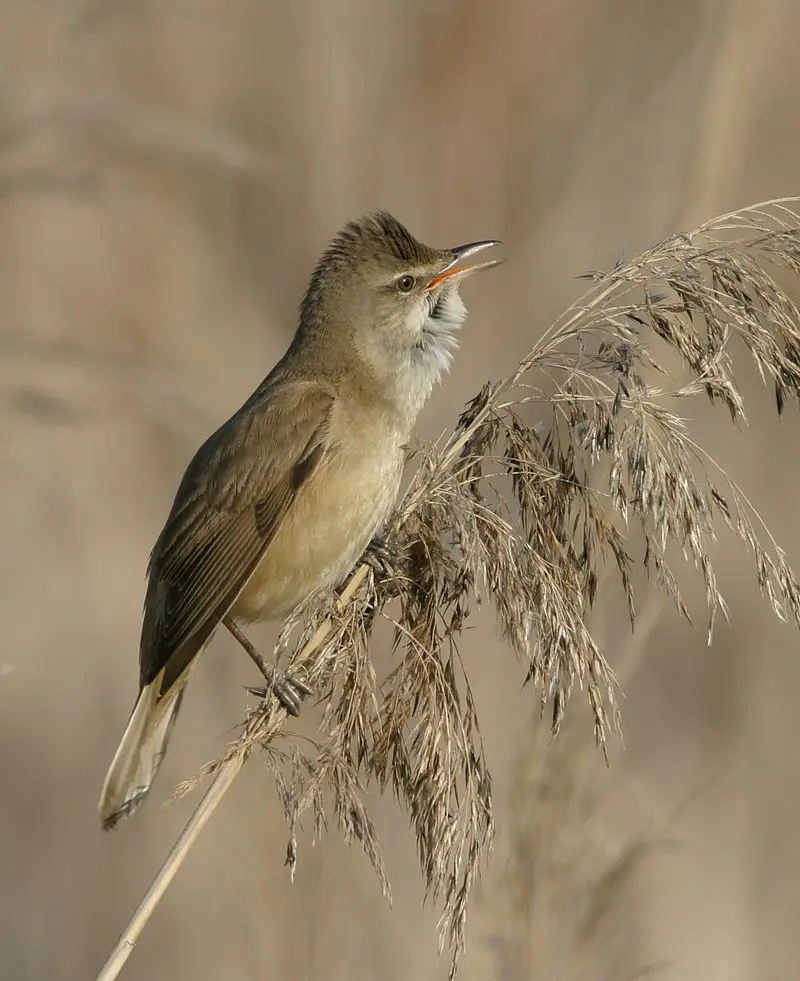
The Acrocephalidae, commonly known as reed warblers, marsh- and tree-warblers or acrocephalid warblers are a family of passerine birds belonging to the superfamily Sylvioidea.
These birds typically have an olivaceous brown top with yellowish to beige underside. They can mostly be spotted in open woodlands, reed beds or tall grasses.
This family comprises about 130 species spread across Eurasia and Africa which includes some vagrant species too.
Most of these bird families feed on insects like spiders, beetles etc., while others also consume small fruits such as berries.
They make nests close to ground level by weaving twigs together using their saliva for binding them making it waterproof enough so that eggs stay safe from rainwater during breeding season.Scientific classification:
| Kingdom | Animalia |
| Phylum | Chordata |
| Class | Aves |
| Order | Passeriformes |
| Superfamily | Sylvioidea |
| Family | Acrocephalidae Salvin, 1882 |
Also Featured In: Birds of United Arab Emirates, Birds that Live in Montenegro
19. Apodiformes
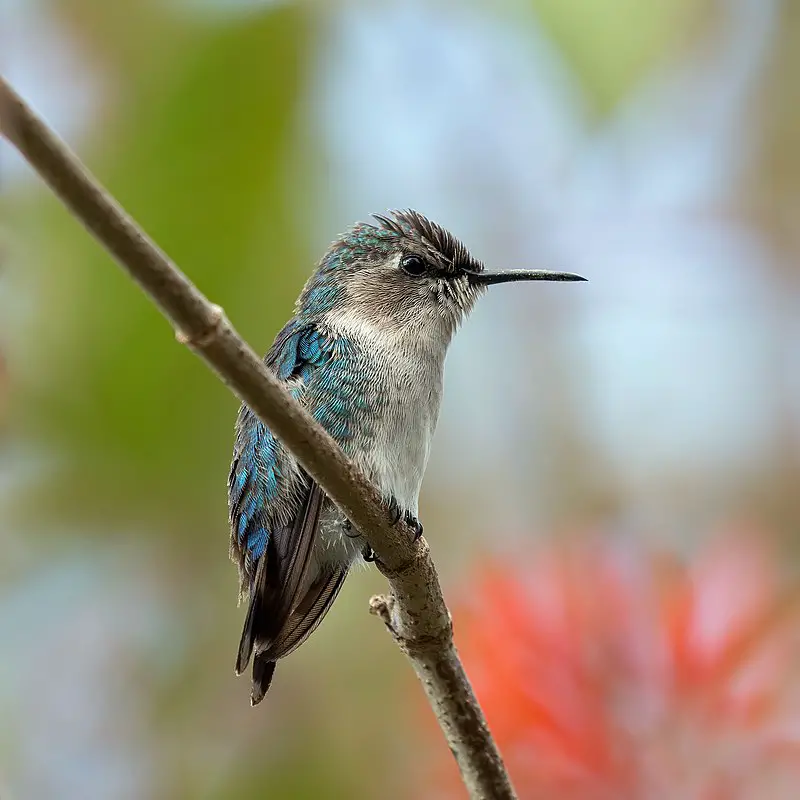
Apodiformes is a bird order consisting of three families: Apodidae, Hemiprocnidae and Trochilidae. With nearly 450 species identified to date, they are the most diverse of any avian group.
They range in size from tiny hummingbirds (Trochilidae) to larger swifts (Apodidae).
The majority of them feed on small insects or nectar from flowers and can fly for extended periods without rest due to their unique physiology; many have long wings which allow them to soar through the air with minimal effort.
Treeswifts (Hemiprocnidsae) inhabit tropical forests where they use their wide-spanning gliding flight pattern as an advantage when hunting prey such as beetles and moths.
These birds form some remarkable migratory patterns too.Scientific classification:
| Kingdom | Animalia |
| Phylum | Chordata |
| Class | Aves |
| Clade | Daedalornithes |
| Order | Apodiformes Peters, 1940 |
Also Featured In: Aruba birds,
20. Northern Bald Ibis
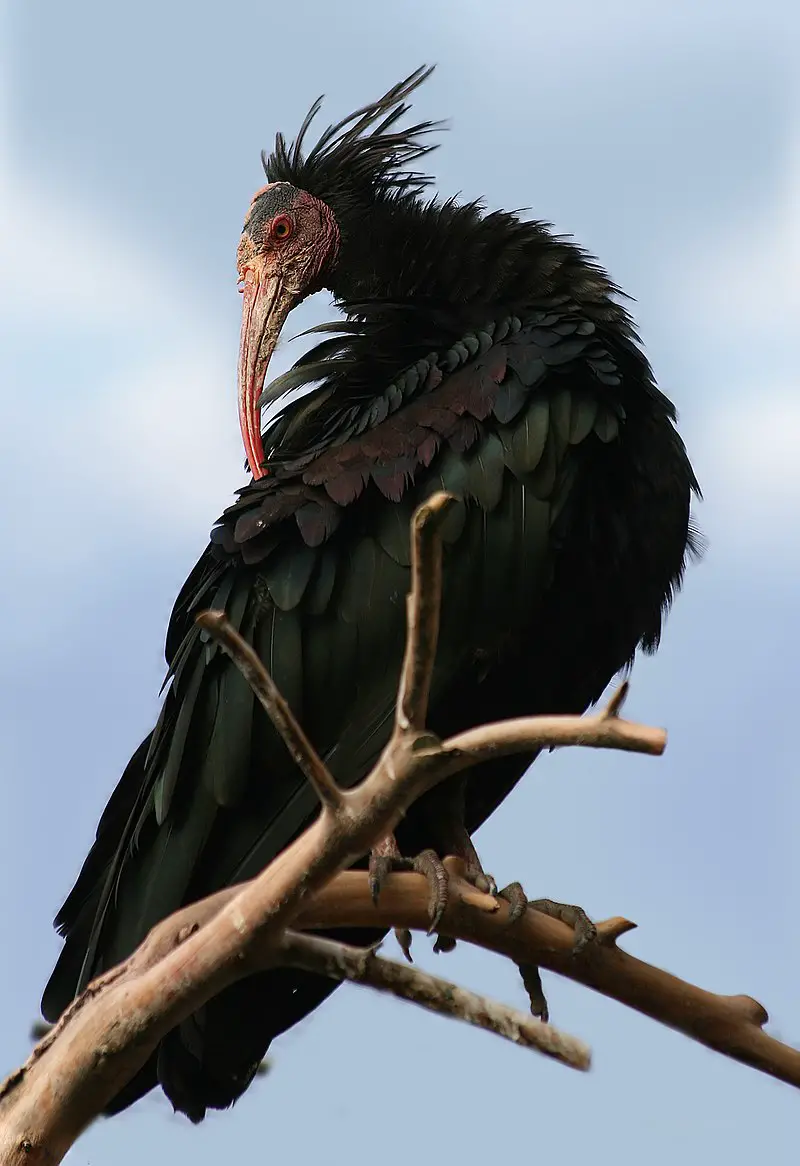
The northern bald ibis, also known as the hermit ibis or waldrapp, is a migratory bird that inhabits barren or semi-desert environments near running water.
Unlike other ibis species, the glossy black northern bald ibis does not wade in water. It has a striking appearance, with a bright red face and head, and a long, curved red bill.
The bird is about 70 to 80cm in length. During breeding season, the northern bald ibis forms colonies on coastal or mountain cliff ledges.
As a migratory bird, the northern bald ibis is constantly on the move, traveling to various regions throughout the year.
Although it is a beautiful bird, it is unfortunately listed as critically endangered due to habitat loss and hunting.Scientific classification:
| Kingdom | Animalia |
| Phylum | Chordata |
| Class | Aves |
| Order | Pelecaniformes |
| Family | Threskiornithidae |
| Genus | Geronticus |
| Species | G. eremita |
Also Featured In: Turkey Birds You Should Know,
21. Flamingos
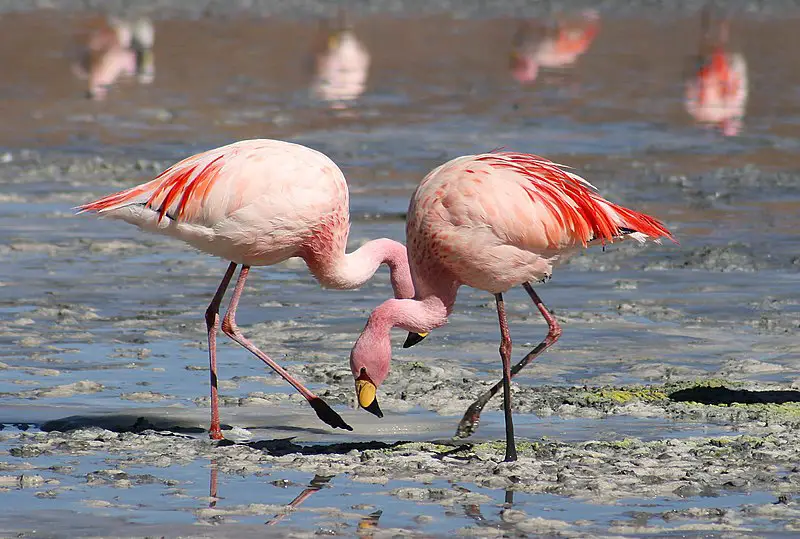
Flamingos are a type of water bird that belong to the Phoenicopteriformes group. They are known for their distinctive pink coloring and long, thin legs.
Flamingos are closely related to grebes and are part of the Mirandornithes clade. These birds are well-documented in the fossil record, with some of their extinct relatives dating back millions of years.
In fact, the first known member of the Phoenicopteridae family was a bird called Elornis. Flamingos are known for their unique feeding habits, which involve using their beaks to filter food from the water.
They are also social creatures that typically live in large groups called colonies.
Overall, flamingos are fascinating creatures with a long history on our planet.Scientific classification:
| Kingdom | Animalia |
| Phylum | Chordata |
| Class | Aves |
| Clade | Mirandornithes |
| Order | Phoenicopteriformes Fürbringer, 1888 |
Also Featured In: Common Algerian Birds , Most Common Romanian Birds
22. Sittidae
The Sittidae bird, also known as nuthatches, are small passerines that belong to the genus Sitta. These birds are known for their distinctive behavior of climbing down trees headfirst.
Nuthatches are mainly found in woodlands and forests of North America, Europe, and Asia. These birds have a short tail, relatively long pointed bill, and stout legs that help them cling to the bark of the trees.
They are omnivorous feeders and primarily feed on insects and nuts. Nuthatches have a unique capability of vocalization and communicate with each other through a variety of calls. These birds are monogamous and breed in pairs.
The female nuthatch lays eggs in cavities, where she incubates them for about two weeks. Nuthatches have a significant role in forest ecosystems as seed dispersers and control insect populations through their foraging behaviors.
23. Cinereous Bunting
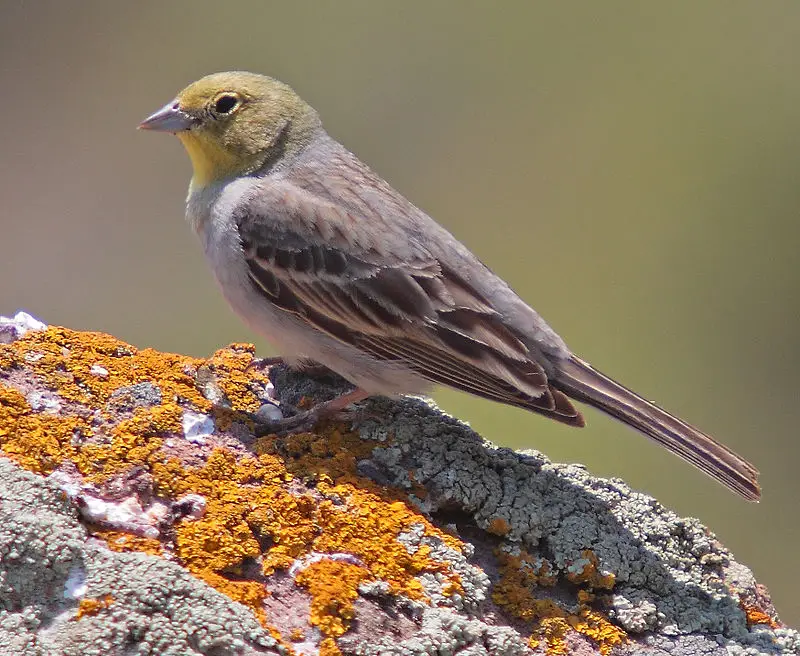
The Cinereous bunting is a passerine bird found in southern Turkey and southern Iran. It belongs to the Emberizidae family but has been separated from finches by most modern authors.
Its scientific name is Emberiza cineracea, and it was first described by Christian Ludwig Brehm.
During winters, this bird migrates to north-eastern Africa and Yemen, mostly around the Red Sea.
A few small and isolated populations maintain the species. The Cinereous bunting is a small-sized bird with an unmistakable coloration of grey on its head, neck, and underparts. Its upperparts are brown with white streaking.
They have a thick bill, rounded wings, and a short tail. They prefer habitats like rocky slopes, steppe, and open shrublands, and their diet includes insects and seeds.Scientific classification:
| Kingdom | Animalia |
| Phylum | Chordata |
| Class | Aves |
| Order | Passeriformes |
| Family | Emberizidae |
| Genus | Emberiza |
| Species | E. cineracea |
Also Featured In: Common Birds of Lesbos Island,
24. Greater Spotted Eagle
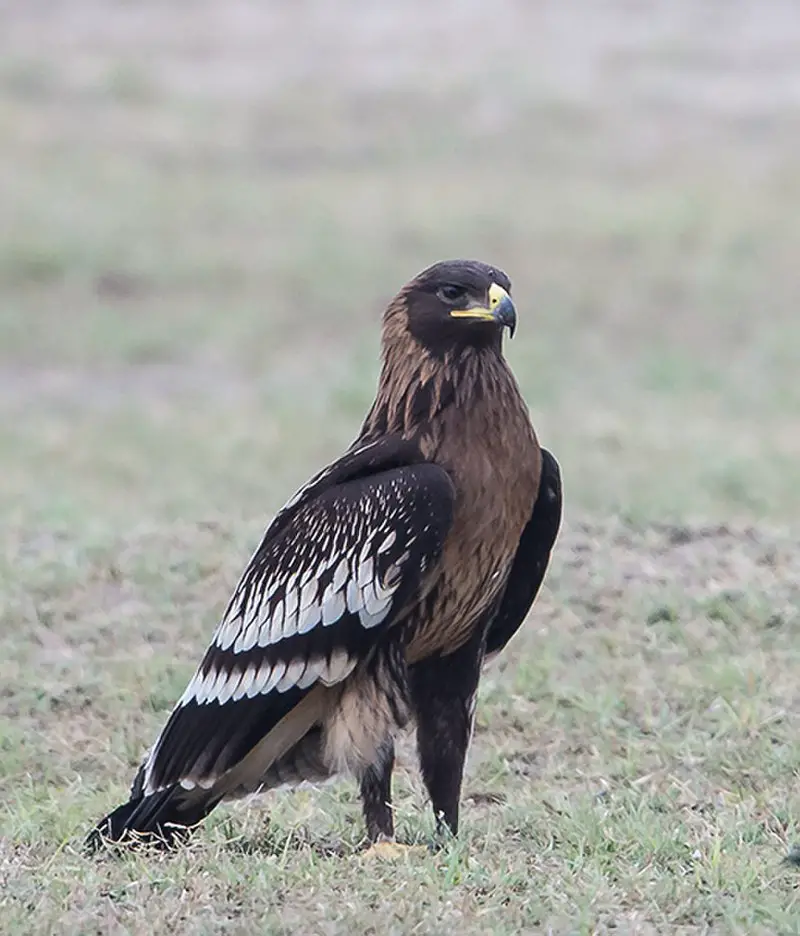
The greater spotted eagle is a large bird of prey that belongs to the Accipitridae family. It is also known as the spotted eagle and has feathered legs that indicate its membership in the subfamily Aquilinae, also called the “booted eagles.”
Although previously considered a member of the Aquila genus, it has been recently reclassified in the Clanga genus, along with other eagle species.
The greater spotted eagle is a magnificent bird with a wingspan of up to 2 meters and is known for its hunting skills.
Due to habitat loss and degradation, its population has been declining, leading it to be classified as a vulnerable species on the IUCN Red List.
Conservation efforts are needed to ensure the survival and protection of this majestic bird.Scientific classification:
| Kingdom | Animalia |
| Phylum | Chordata |
| Class | Aves |
| Order | Accipitriformes |
| Family | Accipitridae |
| Genus | Clanga |
| Species | C. clanga |
Also Featured In: Belarus Birds You Should Know, Lebanon Birds Live in Semi-Desert Areas